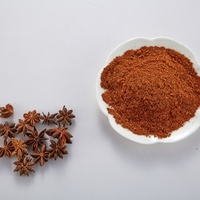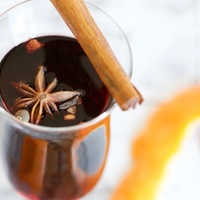Common name: Star anise
Other common names: Badian star anis, Chinese anise, Chinese aniseed, Chinese star anise, Indian anise, Star aniseed, True star anis
Description
Star anise is a spice and essential oil yielding tree originating in the region extending from southern China to northern Vietnam, where it has been cultivated for centuries. The main areas of cultivation in China are Funing and Pingbian counties, in Yunnan Province, and in Vietnam, Van Quan District, in Lạng Sơn Province.
It is a medium-sized tree, 8 to 15 m (26 to 50 ft) tall, with a slender trunk up to 25 cm (10 in) in diameter and a low-branching habit, forming a densely leafy pyramidal crown. The bark is pale grey and smooth.
Leaves are elongated-oval, 5 to 12 cm (2 to 5 in) long, glossy green and have a thick, leathery texture. They are alternately arranged along the stems at the ends of the branches, where they remain in all seasons.
The flowers are white, greenish-yellow or purple, depending on the variety, 1 to 1.5 cm (0.4 to 0.6 in) in diameter and perfect, having both female and male parts. They are borne singly on leafy stems and bloom mainly from spring to summer, though with light blooms on and off at other times of the year.
Fertilised flowers develop into pale yellow-green, spoke-wheel-shaped fruit, 3 to 4.5 cm (1.2 to 1.8 in) in diameter, consisting of seven or eight segments, each with a single seed inside. They become dark brown and dry when mature, about ten to twelve months after fruit-set, the segments easing apart into a star shape and opening to expose the seed.
Use
The fruit yield on steam distillation an essential oil traded as 'Star anise oil'. It is a colourless to pale yellow liquid with a sweet aroma and flavour, closely similar to that of 'Anise oil' extracted from the seed of Anise (Pimpinella anisum), an unrelated, commercially grown herb originating from cold temperate Asia.
Essential oils of both Star anise and Anise are widely used as a flavouring and fragrance by the food, pharmaceutical and cosmetic industries. They are used to give aniseed flavour and aroma to baked goods, dairy desserts, teas, liquors, such as 'Anisette de bordeaux' and 'Pastis', toothpaste, mouthwashes and medicines, as well as to fragrance perfumes and men's colognes, such as 'Brut', a long-standing brand.
Apart from its commercial use, aniseed flavouring is used in home baking and is commonly available as Aniseed essence, usually found sold in small bottles in the baking section of supermarkets.
Star anise oil is extracted mainly from the mature but not fully ripe fruit. However, varying amounts of dried fruit are mixed in with the distilled material. It is the fruit shell and not the seed that yields most of the oil, from 3 to 3.5% by weight.
Some fruit is dried and used as a spice, most commonly in Chinese cuisine, to impart their strong aniseed aroma and flavour to stocks, soups, sauces and stews, especially chicken-based ones.
Health use
The essential oil contains around 85% anethole, an organic compound with stimulant, diuretic and antiseptic properties. It is used in traditional medicine against digestive complaints, such as indigestion and gas and as a treatment against respiratory ailments, such as cough and congestion. It is also prescribed against toothache and bad breath.
Star anise is also the most concentrated natural source of shikimic acid, which is used to synthesise the anti-influenza drug Oseltamivir, otherwise known as Tamiflu. The pharmaceutical industry is now the largest buyer of star anise, purchasing about 90% of the harvest.
Climate
Star anise grows naturally in humid subtropical and tropical mid- to high-elevation climates, generally frost-free areas with annual lows of 13 to 19°C, annual highs of 21 to 28°C, annual rainfall of 1200 to 2700 mm and a dry season of 4 months or less.
Growing
New plants are mostly raised from seed best collected from highly productive, mature trees and then sown within three days (after soaking in lukewarm water overnight).
Performs well on deep, rich, free-draining clay and loam soils of a strongly to slightly acid nature, generally with a pH of 4.0 to 6.5, and on sites with full to partial sun exposure. It has poor tolerance to soils that are alkaline, limestone-derived, slow-draining or waterlogged.
The tree is slow-growing, and it takes a long time to come into bearing, with reports of small harvests starting when the tree is about five to six years old. It does not come into full production until ten years old or older.
Problem features
Star anise is recorded as an introduced species in the Philippines, though not as a weed. Otherwise, there is no record of it anywhere as a weed or invasive species.
The essential oil may cause skin contact dermatitis in susceptible individuals.
Where it grows
References
Books
-
Arctander, S. 1960, Perfume and flavor materials of natural origin, Elizabeth, New Jersey
-
Attokaran, M. 2011, Natural food flavors and colorants, Institute of Food Technologists, Wiley-Blackwell Publishing, Oxfordshire
-
Chevallier, A. 2000, Encyclopedia of herbal medicine, 2nd American ed., Dorling Kindersley, New York
-
Do, D. S. & Nguyen, H. N. 2003, Use of indigenous tree species in reforestation in Vietnam, Agricultural Publishing House, Hanoi
-
Groom, N. 1997, The new perfume handbook, 2nd ed., Blackie Academic & Professional, London
-
Guenther, E. & Althausen, D. 1948 to 1952, The essential oils (6 volumes), Van Nostrand Publishing, New York
-
Macmillan, H. F. 1943, Tropical planting and gardening : with special reference to Ceylon, 5th ed, Macmillan Publishing, London
-
Randall, R. P. 2002, A global compendium of weeds, R.G. and F.J. Richardson Press, Melbourne
-
Seidemann, J. 2005, World spice plants: economic usage botany taxonomy, Springer-Verlag, Berlin
-
Stewart, A. 2013, The drunken botanist : the plants that create the world's great drinks, 1st ed., Algonquin Books, Chapel Hill, North Carolina
-
Weiss, E. A 2002, Spice crops, CABI Publishing, Wallingford, United Kingdom
-
Winter, R. 2009, A consumer's dictionary of cosmetic ingredients : complete information about the harmful and desirable ingredients found in cosmetics and cosmeceuticals, 7th ed, Three Rivers Press, New York
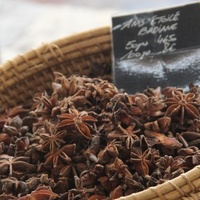
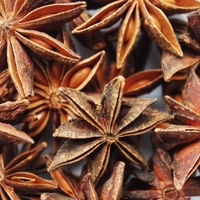
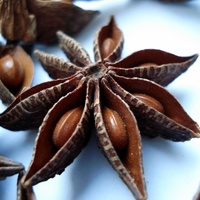
.5732.thumb.jpg)
